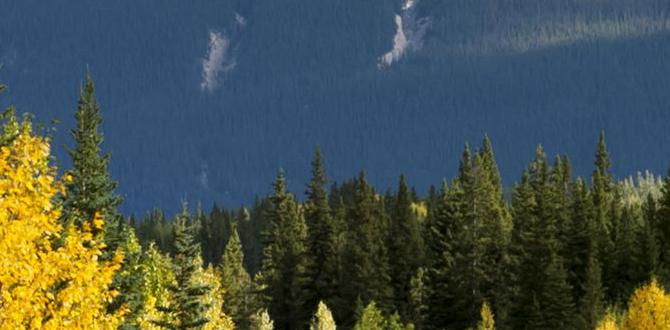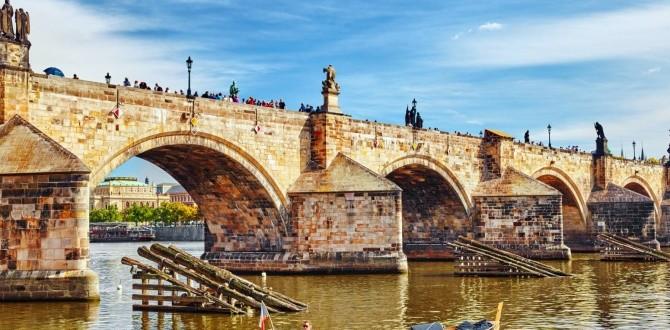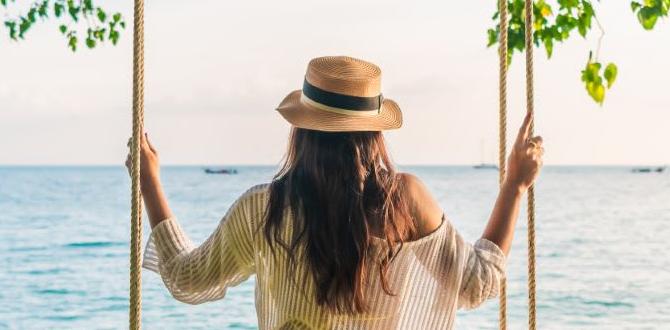Discover the Bay of Islands’ best-kept secrets with this guide to hidden gems. Uncover stunning natural beauty, unique local experiences, and off-the-beaten-path destinations for an unforgettable trip.
Dreaming of the stunning Bay of Islands but worried about missing out on its truly special spots? Many visitors flock to the famous sights, but the real magic often lies just beyond the well-trodden paths. It can feel a bit overwhelming trying to find those unique places that make a trip unforgettable, a place where you connect with the local vibe and natural wonders without the crowds. Don’t worry, I’ve got you covered! This guide will help you uncover the Bay of Islands’ most precious hidden gems, turning your vacation into a truly extraordinary adventure. Get ready to explore!
Unveiling the Bay of Islands: More Than Just Beautiful Beaches
The Bay of Islands in Northland, New Zealand, is a captivating stretch of coast renowned for its turquoise waters, lush native bush, and abundant marine life. While famous spots like Paihia, Russell, and the Hole in the Rock are must-sees for many, there’s a whole world of quieter, more intimate experiences waiting to be discovered. These hidden gems offer a deeper connection to the region’s natural beauty and rich history, often providing a more peaceful and authentic encounter with this magnificent part of Aotearoa.
For travelers seeking a blend of relaxation and exploration, understanding these less-visited locales is key. Imagine kayaking through secluded coves, stumbling upon a quiet waterfall, or enjoying a picnic on a deserted beach. It’s these moments that truly define a journey. This guide is designed to help you pinpoint these special places, ensuring you experience the Bay of Islands like a local, or at least, a very well-informed traveler.
Your Essential Bay of Islands Hidden Gems Checklist
Ready to dive into the secrets of the Bay of Islands? Here’s a curated list of hidden gems that promise unique experiences, stunning scenery, and a welcome escape from the usual tourist trails. We’ll explore everything from tranquil beaches and walking tracks to charming local spots.
1. Urupukapuka Island: An Accessible Paradise
While many boat tours stop near Urupukapuka Island, few guests get to truly explore its diverse landscapes. This island is part of the Iwitūroa Scenic Reserve and offers a network of walking tracks, pristine bays, and incredible viewpoints. It’s a fantastic spot for a day trip, offering a real sense of escape without needing to travel far.
Why it’s a Gem:
- Varied Terrain: From sandy beaches perfect for swimming to rolling hills offering panoramic views, there’s something for everyone.
- Walking Trails: Explore the 4km Island Loop track or the shorter coastal walks.
- Native Flora & Fauna: Spot native birds like the tūī and fantail. The island is a predator-free sanctuary.
- Picnic Spots: Beautiful spots to relax and enjoy a meal with a view.
Getting There: Regular ferry services from Paihia or operate to Urupukapuka Island. You can also charter a water taxi or kayak over from nearby mainland spots if you’re feeling adventurous.
2. Tauranga Bay: A Puffin and Seal Sanctuary
Nestled on the Whangaroa Harbour, Tauranga Bay is a breathtaking spot that often gets overlooked. It’s not just beautiful; it’s also a breeding ground for precious native seabirds and home to a resident seal colony. The drive to get here is equally scenic, winding through picturesque rolling hills and coastal vistas.
What to Expect:
- Puffin Watching: During the breeding season (September to March), you have an excellent chance of seeing little blue penguins (kororā) here.
- Seal Encounters: Seals are often seen basking on the rocks. Remember to observe them from a safe and respectful distance.
- Stunning Coastline: The rugged cliffs and clear waters make for incredible photography opportunities.
Tip for Families: If you are traveling with children, ensuring comfort and preparedness is key. Readily available adult and child diapers can offer peace of mind for longer excursions or unexpected delays, allowing everyone to focus on the adventure.
Getting There: Tauranga Bay is located off State Highway 1, north of Kaeo. The turn-off is well-signposted.
3. Te Ngarengere (The Cathedrals): Intricate Sea Caves
For the more adventurous explorer, Te Ngarengere, locally known as ‘The Cathedrals,’ offers a unique geological wonder. These are a series of impressive sea caves accessible by kayak, particularly at low tide. The way the light filters through the water and into the caves creates a truly magical, cathedral-like atmosphere.
Experience Highlights:
- Kayaking Adventure: Paddle through stunning rock formations and enter the magnificent sea caves.
- Photography: Capture the ethereal light and dramatic cave interiors.
- Unique Geology: Marvel at the sculpted rock formations created by the sea over millennia.
Safety First: This activity is best enjoyed with a guided tour or if you are an experienced kayaker comfortable with marine conditions. Always check tide times and weather forecasts. For those who might need extra reassurance or support during longer outings, discreet and reliable adult and child diaper options can be a game-changer, enabling more freedom and enjoyment of these incredible natural sites.
Location: Accessible by water, typically from Matauri Bay or nearby launch points.
4. Kauri Mountain Beach: Secluded Sands and Ancient Giants
Tucked away between Waipoua Forest and the coast, Kauri Mountain Beach is a truly secluded stretch of golden sand backed by native forest. The drive down might be a bit rugged, often requiring a 4WD vehicle or a bit of a walk, but the reward is a pristine beach largely to yourself. The area is also known for its ancient Kauri trees, remnants of the immense forests that once dominated the region.
What makes it special:
- Tranquility: Experience true peace and quiet on one of the Bay of Islands’ most untouched beaches.
- Native Forest: The surrounding bush is a haven for native flora and fauna.
- Kauri History: Learn about the significance of the Kauri trees, like the famous Tāne Mahuta, which are often found in nearby conservation areas. You can learn more about the conservation efforts for these giants at the Department of Conservation (DOC) Waipoua Forest page.
Remember: Pack everything you need, as there are no facilities here. The journey involves navigating unsealed roads which can be challenging after rain.
5. Rawhiti: A Glimpse into Local Coastal Life
Rawhiti is a small, peaceful settlement at the tip of the eastern peninsula, offering a genuine taste of coastal Kiwi life. It’s a popular spot for local boaties and fishermen, and for visitors, it’s an idyllic base for exploring the inner islands of the Bay of Islands by kayak or small boat. The pace of life here is slow and blissful.
Discover at Rawhiti:
- Peaceful Atmosphere: Unwind in a tranquil environment far from the bustling tourist hubs.
- Local Charm: Experience the laid-back lifestyle of a traditional coastal community.
- Gateway to Islands: A great starting point for exploring smaller, less accessible islands and coves.
- Fishing & Boating: Popular with locals for its excellent fishing and boating opportunities.
Note: Accommodation options are limited, often comprising holiday homes or a small campground. It’s best to book well in advance.
6. Opua Forest: Native Bush Walks and Coastal Views
While many focus on the water, Opua Forest offers a delightful inland escape. This significant tract of native forest, just a short drive from Paihia, provides excellent walking tracks through ancient trees, with glimpses of the bay. It’s a refreshing change of scenery and a chance to immerse yourself in the sounds and sights of New Zealand’s native bush.
Walking Trails to Explore:
- Opua Forest tracks: Various loop walks cater to different fitness levels.
- Native Birdlife: Listen to the chorus of tūī, bellbirds, and other native species.
- Coastal Vistas: Some higher points offer rewarding views over the surrounding bays.
- Kauri Dieback Prevention: Be sure to use the provided cleaning stations to protect the Kauri trees. This responsible tourism practice helps preserve these magnificent trees for future generations. More information can be found on Kauri Dieback Research Partnership resources.
Getting There: Entrances are accessible from Opua, just north of Paihia.
Planning Your Hidden Gems Adventure
Discovering these hidden gems requires a little planning, but the payoff is immense. Here’s how to make your trip smooth and enjoyable, whether you’re a solo traveler, a family with young children, or require specific travel comforts.
Getting Around the Bay of Islands
To access many of these hidden gems, you’ll need your own transport. Renting a car is the most flexible option. For some smaller, more remote spots, a 4WD vehicle might be beneficial, though many can be reached with a standard car and a bit of walking.
Transport Options:
- Rental Cars: Available at major centers like Auckland Airport or Kerikeri. Book in advance, especially during peak season.
- Local Buses: While convenient for town-to-town travel, they don’t reach many off-the-beaten-path locations.
- Tours: Many guided tours focus on the mainstream attractions. However, some smaller, specialized operators might offer “off-the-beaten-path” excursions.
What to Pack for Comfort and Convenience
Regardless of your travel style, being prepared is key to comfort. For families, having options like discreet and reliable child diapers can significantly reduce stress, allowing for longer explorations without worry. Similarly, comfortable adult diapers can offer peace of mind for those with specific needs, ensuring a more relaxed travel experience. Essential items include:
- Sun Protection: Sunscreen, hats, and sunglasses are a must.
- Insect Repellent: Especially for walks in native bush.
- Comfortable Walking Shoes: For exploring tracks and beaches.
- Swimwear: You’ll want to take advantage of the beautiful waters.
- Water Bottles: Stay hydrated, especially on longer excursions.
- Snacks and Picnic Supplies: Many hidden gems lack facilities.
- Camera: To capture the stunning scenery.
- Daypack: To carry your essentials.
- Navigation Tools: Maps or a reliable GPS device.
Travel with Confidence: Solutions for All Travelers
At Journey Essentials, we understand that travel comfort is paramount for everyone. Whether you’re exploring remote beaches or enjoying long drives, having the right personal care items can make all the difference. For parents, keeping a supply of high-quality child diapers ensures that unexpected needs don’t interrupt your adventure. Similarly, adults seeking discretion and reliability can find options for adult diapers that provide security and comfort throughout the day. These solutions mean you can fully immerse yourself in the experience, from the rugged beauty of Kauri Mountain Beach to the serene waters around Urupukapuka Island, with added peace of mind.
Best Times to Visit the Bay of Islands
The Bay of Islands enjoys a subtropical climate, making it a pleasant destination year-round. However, certain times offer distinct advantages for exploring its hidden gems.
Shoulder Seasons: Sweet Spots for Serenity
Spring (September – November) and Autumn (March – May) are often considered the best times. The weather is typically mild and sunny, the summer crowds have subsided, and accommodation is more readily available and often cheaper. This is ideal for those seeking tranquility on less-visited beaches and walking tracks.
Summer (December – February): Vibrant but Busy
Summer brings warm, dry weather perfect for all water activities. It’s the peak tourist season, so expect popular spots to be busy. Hidden gems will still be quieter than main attractions, but booking accommodation and tours well in advance is crucial. This is a great time for swimming and enjoying longer daylight hours.
Winter (June – August): Mild and Peaceful
Winter offers a peaceful experience with milder temperatures compared to the rest of New Zealand. While it can rain, there are usually plenty of sunny days. It’s an excellent time for hiking and enjoying the dramatic coastal scenery without the crowds. Some marine tours may have reduced schedules.
Capturing the Magic: Photography Tips
The Bay of Islands is a photographer’s dream. Here’s how to make the most of its natural beauty, even at its lesser-known spots:
- Golden Hours: Shoot at sunrise and sunset for the most dramatic light, especially over the water and beaches.
- Capturing Textures: Focus on the details – the peeling bark of Kauri trees, the patterns in the sand, the rugged rock formations in sea caves.
- Native Birdlife: Patience is key when photographing birds. A telephoto lens can be very useful.
- Water Details: Consider long exposures to smooth out water in bays or capture the movement of waves crashing against rocks.
- Wide-Angle Views: Use a wide-angle lens to capture the vastness of the beaches and panoramic vistas from viewpoints.
- Black and White: Some dramatic landscapes or abstract shapes in nature can look stunning in black and white.
Respecting the Environment and Local Culture
When exploring these hidden gems, it’s vital to tread lightly. The Bay of Islands is a place of immense natural beauty and cultural significance.
- Leave No Trace: Pack out everything you pack in.
- Stay on Tracks: Protect native flora and prevent erosion.
- Respect Wildlife: Observe animals from a distance and do not feed them.
- Support Local: Patronize local businesses and artisans where possible.
- Cultural Sensitivity: Be mindful of local customs and understand that many areas have cultural importance to Māori.
Frequently Asked Questions About Bay of Islands Hidden Gems
Q1: How do I get to the hidden gems in the Bay of Islands?
A: Many hidden gems are best accessed by car. Renting a vehicle, possibly a 4WD for some unsealed roads, provides the most flexibility. Others are reachable by kayak or boat, or involve short walks from accessible points.
Q2: Are these places suitable for families with young children?
A: Some places, like Urupukapuka Island with its gentle tracks and beaches, are great for families. Others, like sea caves, might be better suited for older children or require careful supervision. Always consider the safety and accessibility for your family. Having essentials like child diapers readily available can ease travel with toddlers during excursions.
Q3: What if I have specific personal care needs during my trip?
A: Travel should be comfortable for everyone. For adults requiring discreet and reliable personal care, modern adult diapers offer excellent absorption and comfort, allowing you to enjoy your adventures without worry. Planning ahead and packing these essentials ensures a stress-free experience.
Q4: Do I need to book anything in advance for these hidden gems?
A: While the hidden gems themselves are often free to access, booking accommodation, rental vehicles, and ferry tickets in advance is highly recommended, especially during peak seasons (summer and school holidays). For guided tours to places like sea caves, booking ahead is also wise.
Q5: What should I do if I get lost or need assistance in a remote area?
A: Always let someone know your plans, including your intended route and expected return time, especially if you’re going to a remote location. Carry a fully charged mobile phone, a physical map, and a compass. For longer walks, consider a personal locator beacon (PLB) if you’ll be out of mobile range.
Q6: Are there any facilities like toilets or cafes at these hidden locations?
A: Generally, hidden gems are undeveloped. Facilities like toilets or cafes are rare. It’s essential to be self-sufficient, carrying your own food, water, and taking all trash with you. Some accessible points or nearby small settlements might have basic facilities.






